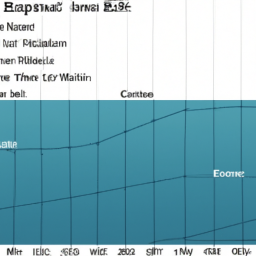For those looking to save for retirement, the Roth IRA may be a great option. But it's important to understand the Roth IRA income limits. Roth IRAs offer tax-free growth and tax-free withdrawals in retirement, making them an attractive option for long-term investors. However, there are annual income limits that may prevent some individuals from contributing to a Roth IRA. In this article, we'll explain what the Roth IRA income limits are and how to strategize around them.
In order to contribute to a Roth IRA, you must have earned income of any kind. This includes wages, salaries, tips, bonuses, alimony, self-employment income, and more. The transfers are subject to annual Roth IRA contribution limits (but there is no upper income constraint). To best strategize around these limits, you may need to consider a backdoor Roth IRA maneuver. With this, you can make a Roth contribution to your 401(k) with after-tax money.
The income limits for a Roth IRA vary each year. For tax year 2021, the maximum Roth IRA contribution limit is $6,000 for those under age 50, and $7,000 for those 50 and older. This limit applies to both traditional and Roth IRAs—so if you contribute to both, you’ll need to stay within the $6,000/$7,000 limits.
In addition to the contribution limits, there is an income limit for Roth IRAs. Those earning above this threshold can make reduced contributions. This income limit is based on Adjusted Gross Income (AGI) and is set by the IRS. For tax year 2021, the income limits are:
• Single filers: AGI of $140,000 or less
• Married filing jointly: AGI of $208,000 or less
• Married filing separately: AGI of $10,000 or less
For those who exceed the income limits, there is an option to make a nondeductible contribution to a traditional IRA and then convert it to a Roth IRA. This is known as a “backdoor Roth IRA.”
Teens may also be required to pay income tax on the money they make once their earnings reach certain limits. The limits for teens depend on their filing status, age, and other factors. It’s important to understand the tax laws for teens and their income limits.
For tax year 2023, you can save even more because contribution limits are adjusted for inflation each year. For tax year 2023, the maximum Roth IRA contribution limit is $6,500 for those under age 50, and $7,500 for those 50 and older.
In addition to the contribution limits, the income limits for a Roth IRA may also change each year. So it’s important to keep an eye on the income limits and adjust your contributions accordingly.
Understanding the Roth IRA income limits and contribution limits is essential to making the most of your retirement savings. With a little planning and strategizing, you can maximize your contributions and take advantage of the tax-free growth and withdrawals that Roth IRAs offer.
